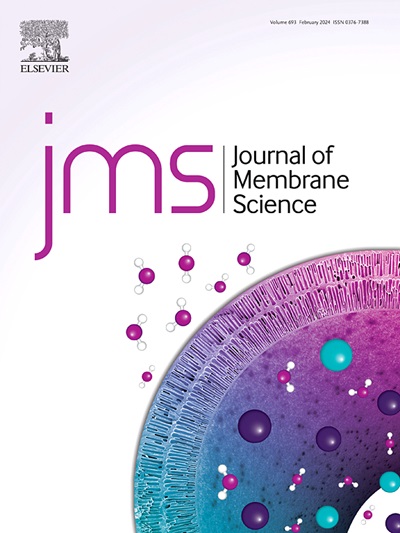Exploring Nafion's microstructural changes and the impact on the performance of PEMFC under high-energy radiation
IF 8.4
1区 工程技术
Q1 ENGINEERING, CHEMICAL
引用次数: 0
Abstract
PEMFCs, crucial for space energy needs, rely on Nafion for proton conductivity and durability. High-energy radiation in space can degrade PEMFC performance. Therefore, in-depth research on the microstructural evolution of Nafion under high-energy radiation and its impact on PEMFC's performance is of great significance for promoting the application of fuel cell technology in the space field. This work combines experimental and computational simulation methods to propose the evolution mechanism of C–O–C rupture and –COOH generation in Nafion under high-energy radiation. The new molecular structure formed has increased chain spacing and free volume, enhanced water absorption and swelling properties, and decreased structural stability. When the radiation absorption dose exceeds 400 kGy, Nafion completely becomes brittle and cannot be used. The change in Nafion at 0–400 kGy structure resulted in a significant overall decrease in mechanical properties (decreased by 73.76 %), proton conductivity (decreased by 40.59 %), output power density (from 480.00 to 30.00 mW/cm2), hydrogen permeation (from 2.26 to 60.75 mA/cm2), and open-circuit voltage (from 1.01 to 0.27 V). This study not only enhances the understanding of Nafion's structural evolution and performance degradation under high-energy radiation but also provides important research directions for developing high-performance PEMFCs suitable for the space environment.

求助全文
约1分钟内获得全文
求助全文
来源期刊

Journal of Membrane Science
工程技术-高分子科学
CiteScore
17.10
自引率
17.90%
发文量
1031
审稿时长
2.5 months
期刊介绍:
The Journal of Membrane Science is a publication that focuses on membrane systems and is aimed at academic and industrial chemists, chemical engineers, materials scientists, and membranologists. It publishes original research and reviews on various aspects of membrane transport, membrane formation/structure, fouling, module/process design, and processes/applications. The journal primarily focuses on the structure, function, and performance of non-biological membranes but also includes papers that relate to biological membranes. The Journal of Membrane Science publishes Full Text Papers, State-of-the-Art Reviews, Letters to the Editor, and Perspectives.
 求助内容:
求助内容: 应助结果提醒方式:
应助结果提醒方式:


